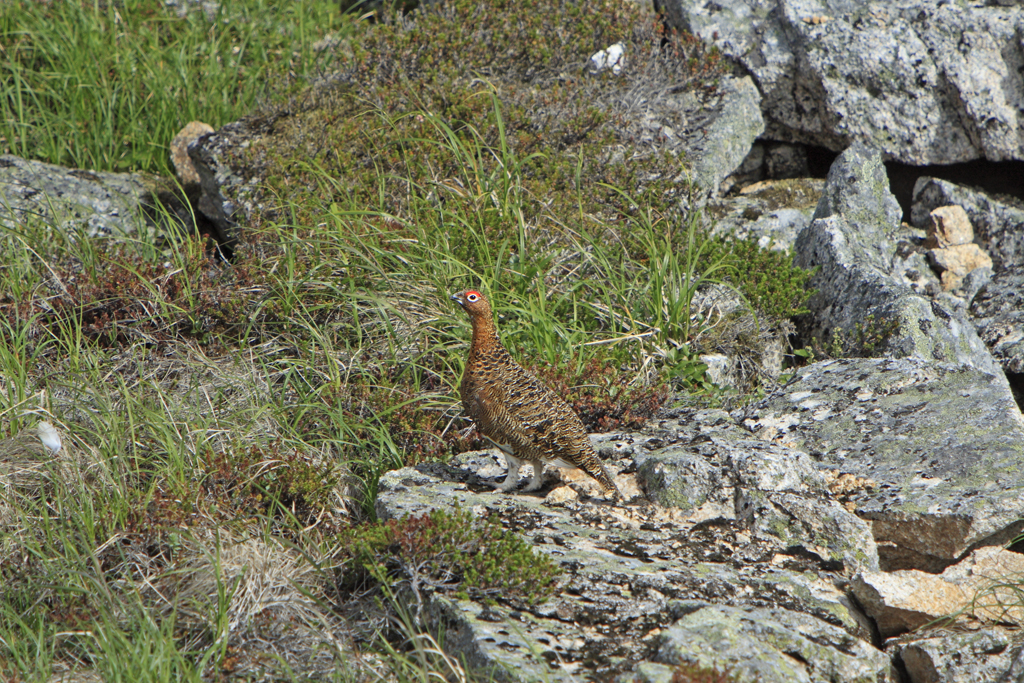Willow Grouse (Lagopus lagopus)
Id: In winter all-white, except for black bill and eye, and tail-sides. From spring onwards, some warm rufous-brown colour on head, neck and back, increasing to cover all but wings and belly in late summer. Female always more delicately patterned, with scales. Red Grouse of Scotland rich rufous all over throughout year.

By Alan Vernon – Flickr: Male Willow Ptarmigan (Lagopus lagopus), CC BY 2.0, https://commons.wikimedia.org/w/index.php?curid=14515871
In most families this would be considered as an impressively hardy species, occurring as it does high into the Arctic in winter. But as far as grouse go it is always trumped by the more extreme Ptarmigan. The present species prefers less exposed places, so it is often found, for example, around the edge of forests; it breeds well into the tundra, but requires the presence of bushes of willow and dwarf birch, rather than bare, rocky areas. It is also replaced above the tree-line by the Ptarmigan. That said, it has very similar plumage sequences to the Ptarmigan, including the all-white look in winter for camouflage in the snow.
The diets of the two species are only slightly different although the Willow Grouse, as its name suggests, sometimes takes willow in preference to anything else. But over this species’ large range things may vary locally; the Scottish race, for example, the “Red Grouse”, feeds almost exclusively on heather year-round. Even the chicks begin to eat heather when less than three weeks old.
In early spring (or even during the autumn in Scottish birds) the males space themselves out into territories and perform advertising displays. Taking off towards the edge of their territory they lift rapidly into the air with a burst of wing-beats, stall for a moment, then parachute down to the ground with more wing-beats, and with tail spread. Upon landing they bob up and down, with wings drooped and tail fanned. This display is accompanied by a guttural call ending “go-back, go-back, go-back…” The pair bond in Willow Grouse is relatively strong, birds pairing with just one partner each. In contrast to the situation in most game birds, the male remains with the family until the chicks are fully grown.
From ‘Birds: A Complete Guide to All British and European Species’, by Dominic Couzens. Published by Collins and reproduced with permission.
